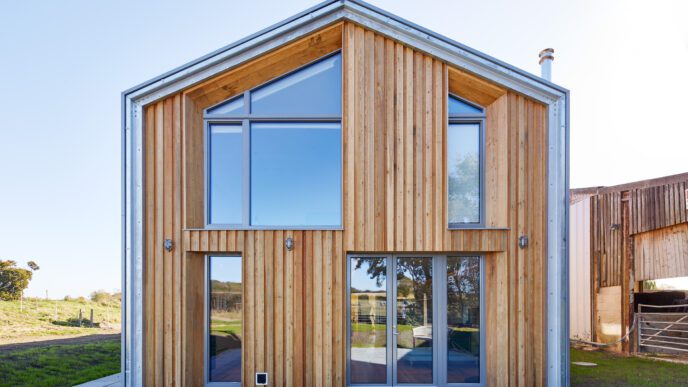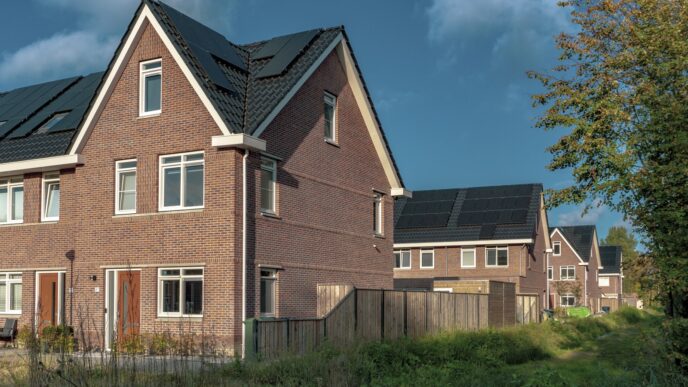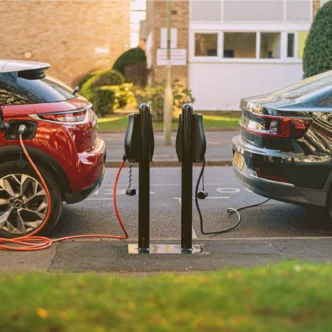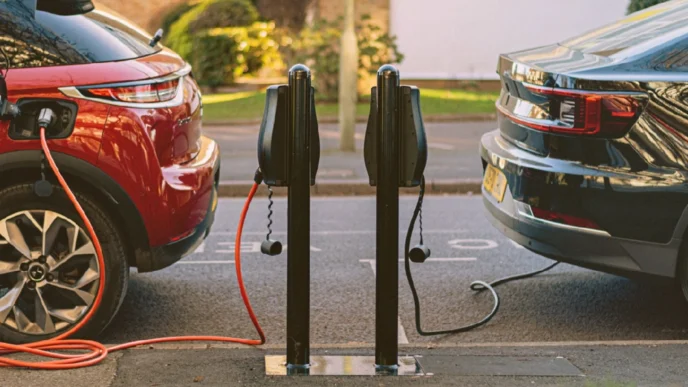Renewable energy is expanding across the UK, but why are energy bills still high? With more wind and solar, many expect lower costs, yet prices remain stubbornly high. Let’s explore why. With more wind turbines spinning and solar panels soaking up the sun, many people assume that the increasing share of green energy should mean cheaper electricity for everyone. But as Ofgem’s Chief Executive highlighted on the BBC this morning, rising bills are still largely dictated by gas and electricity market prices.
So, if we’re generating more clean energy than ever before, why isn’t that reflected in our household bills? Let’s take a deep dive into the reality of the UK’s energy system, how renewables impact prices, and what the future might look like.
The Growing Role of Renewable Energy
The UK is leading the transition to renewable energy, with wind, solar, and hydro now making up a significant portion of the country’s electricity generation.
• Wind power is the dominant renewable source, particularly offshore, where the UK benefits from strong and consistent wind conditions.
• Solar power continues to expand, contributing more during summer months when daylight hours are longer.
• Hydropower and biomass play smaller but still important roles in providing additional renewable energy.
With all this progress, it’s reasonable to ask: Why are my bills still so high?
The Gas Price Problem: Why It Still Dictates Your Bill
Even as the UK produces more renewable electricity, the wholesale price of gas remains the biggest factor driving up bills. This is because the UK’s energy system is still heavily influenced by gas prices, and here’s why:
1. Gas Power Stations Still Set the Price
• The UK still relies on gas-fired power stations, especially when demand is high, or renewable output is low.
• Because of the way the electricity market is structured, the most expensive source of electricity (typically gas) sets the price for all power generation—even for cheaper renewables.
2. The UK Grid Isn’t Fully Ready for 100% Renewables
• Wind and solar power are intermittent—they generate electricity depending on the weather.
• To ensure a stable supply, gas power plants are still needed as a backup when renewable generation is low.
3. Global Energy Prices Affect the UK
• Even though the UK produces a lot of its own electricity, we’re still affected by global gas prices.
• The war in Ukraine, supply chain disruptions, and high demand for gas across Europe have kept prices high, which impacts electricity costs.
Until the UK fully moves away from fossil fuels and reforms the way electricity pricing works, gas will continue to have a major influence on household bills—even with more renewables in the mix.
Is Renewable Energy Actually Helping Reduce Bills?
Yes—but not in the way many people expect. While renewables haven’t yet led to a dramatic drop in bills, they are helping to prevent them from being even higher.
• Wind power lowers prices when it’s strong. On particularly windy days, wind farms generate enough electricity to reduce the need for expensive gas power.
• Solar energy reduces demand for grid electricity during the day, especially in summer, when usage is lower.
• Renewables are cheaper to generate than fossil fuels. Once built, wind and solar farms have very low running costs, unlike gas, which requires constant fuel purchases.
The UK’s Energy Price Guarantee has already factored in the cost savings from renewables, even if consumers don’t see them directly reflected in their bills yet.
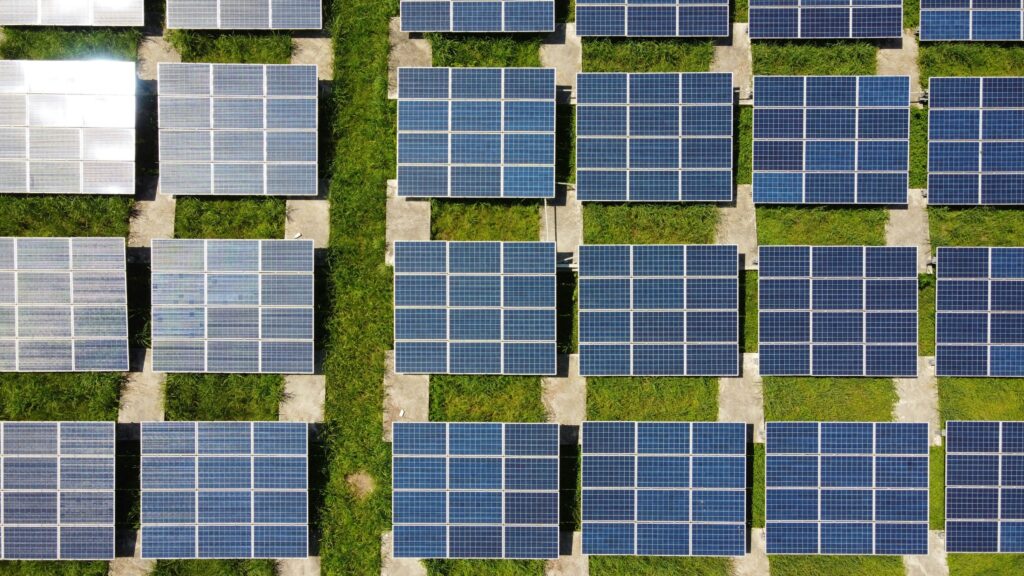
What Needs to Change for Bills to Drop?
To fully see the financial benefits of renewables on household bills, a few key things need to happen:
1. Energy Market Reform
• The way electricity is priced in the UK needs to change so that cheaper renewable energy is no longer unfairly linked to gas prices.
• A split market, where renewable energy and gas are priced separately, could help reduce costs.
2. Better Energy Storage
• The UK needs large-scale battery storage to store surplus renewable energy for times when generation is low.
• This would reduce reliance on expensive gas-fired backup power.
3. More Investment in Grid Infrastructure
• The electricity grid needs to be upgraded to handle more renewable energy efficiently.
• This includes offshore wind connections, smart grid technology, and reducing energy waste.
4. Cheaper Renewable Tariffs for Consumers
• Most people are still on standard tariffs that don’t always pass on the benefits of cheaper renewables.
• Time-of-use tariffs, which charge less when renewable generation is high, could provide direct savings.
What Does the Future Look Like?
So, will we ever see a day when renewables directly lower electricity bills? Yes—but it will take time.
By 2035, the UK aims to fully decarbonise electricity production, which means:
✅ The majority of electricity will come from renewables.
✅ Electricity will be cheaper to generate.
✅ Gas will no longer dictate energy prices.
When that happens, we should finally see the benefits reflected in lower bills.
In the meantime, homeowners can take advantage of renewables themselves:
• Installing solar panels to generate their own electricity.
• Using home battery storage to store cheap or free energy for later.
• Switching to EVs, which can be charged during periods of high renewable generation.
A Work in Progress
While more renewables should mean cheaper electricity, the reality is that we’re in a transition phase where the old fossil fuel system still has an impact. Gas prices still influence overall energy costs, grid limitations hold us back, and market structures don’t yet fully reward renewable energy generation.
But the long-term trend is clear: As the UK shifts towards a fully renewable-powered grid, we will finally see the cost savings reflected in our bills. Until then, it’s important to push for energy market reforms, invest in better infrastructure, and support policies that accelerate the transition to clean, affordable energy.
So next time you wonder why your bill isn’t dropping despite all the wind farms and solar panels, remember—it’s not the renewables that are expensive, it’s the system around them that still needs to catch up.
Key Takeaways
• The UK is generating more renewable energy than ever, but gas prices still drive electricity costs.
• Renewables prevent bills from being even higher, but they haven’t yet caused major reductions.
• The electricity market needs reform, better storage, and infrastructure upgrades to maximise the benefits of renewables.
• The UK’s goal of 100% clean electricity by 2035 should finally break the link between gas and electricity pricing.
Citations
• Ofgem on energy prices – Ofgem’s Chief Executive stated that energy bills remain tied to gas and electricity market prices (BBC News).
• UK renewables share – Renewables accounted for 41.5% of UK electricity generation in 2024 (UK Gov Report).
• Global gas prices impact – The war in Ukraine and supply issues have driven up UK energy prices (The Guardian).
• How the UK electricity market works – Gas-fired generation often dictates electricity prices (UK Gov Review).
• UK’s 2035 decarbonisation target – The UK aims for a fully decarbonised electricity grid by 2035 (UK Gov Strategy).
• Energy storage investment – The UK needs large-scale battery storage to balance renewable fluctuations (The Guardian).
• Energy Price Guarantee – The scheme helps manage household energy costs (BBC News).






